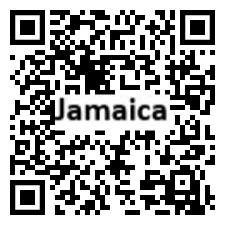Introduction
Background
Native Taino inhabited Jamaica for centuries before Spanish settlement that began early in the 16th century. England seized the island in 1655 and established a plantation economy based on sugar, cocoa, and coffee. Jamaica gained full independence in 1962.
Geography
Area
total: 10,991 sq km
land: 10,831 sq km
water: 160 sq km
Climate
tropical; hot, humid; temperate interior
Natural resources
bauxite, alumina, gypsum, limestone
People and Society
Population
2,820,982 (2023 est.)
Ethnic groups
Black 92.1%, mixed 6.1%, East Indian 0.8%, other 0.4%, unspecified 0.7% (2011 est.)
Languages
English, Jamaican patois
Religions
Protestant 64.8% (includes Seventh Day Adventist 12.0%, Pentecostal 11.0%, Other Church of God 9.2%, New Testament Church of God 7.2%, Baptist 6.7%, Church of God in Jamaica 4.8%, Church of God of Prophecy 4.5%, Anglican 2.8%, United Church 2.1%, Methodist 1.6%, Revived 1.4%, Brethren 0.9%, and Moravian 0.7%), Roman Catholic 2.2%, Jehovah's Witness 1.9%, Rastafarian 1.1%, other 6.5%, none 21.3%, unspecified 2.3% (2011 est.)
Population growth rate
0.09% (2023 est.)
Government
Government type
parliamentary democracy (Parliament) under a constitutional monarchy; a Commonwealth realm
Capital
name: Kingston
Executive branch
chief of state: King CHARLES III (since 8 September 2022); represented by Governor General Sir Patrick L. ALLEN (since 26 February 2009); the Jamaican Government, in May 2023, announced plans to transition to a republic and to hold a referendum in 2024 to remain in the Commonwealth or become a republic
head of government: Prime Minister Andrew HOLNESS (since 3 March 2016)
Legislative branch
description: bicameral Parliament consists of:
Senate (21 seats; 13 members appointed by the governor general on the advice of the prime minister and 8 members appointed by the governor general on the advice of the opposition party leader; members serve 5-year terms (no term limits) or until Parliament is dissolved)
House of Representatives (63 seats; members directly elected in single-seat constituencies by simple majority vote to serve 5-year terms (no term limits) or until Parliament is dissolved)
Economy
Economic overview
upper middle-income Caribbean island economy; ongoing debt restructuring; hurricane-vulnerable economy; high crime, youth unemployment, and poverty; susceptible to commodity shocks from ongoing Russia invasion of Ukraine
Real GDP (purchasing power parity)
$27.136 billion (2021 est.)
$25.943 billion (2020 est.)
$28.825 billion (2019 est.)
Real GDP per capita
$9,600 (2021 est.)
$9,200 (2020 est.)
$10,200 (2019 est.)
Agricultural products
sugar cane, goat milk, yams, poultry, coconuts, oranges, bananas, gourds, plantains, grapefruit
Industries
agriculture, mining, manufacture, construction, financial and insurance services, tourism, telecommunications
Remittances
25.29% of GDP (2021 est.)
22.2% of GDP (2020 est.)
16.19% of GDP (2019 est.)
Exports
$4.385 billion (2021 est.)
$3.343 billion (2020 est.)
$5.991 billion (2019 est.)
Exports - partners
United States 46%, Netherlands 9%, Canada 6%, United Kingdom 4&, Russia 3% (2021)
Exports - commodities
aluminum oxide, refined petroleum, aluminum, rums, fruits, nuts, natural gas, sauces and seasonings (2021)
Imports
$7.414 billion (2021 est.)
$5.911 billion (2020 est.)
$8.317 billion (2019 est.)
Imports - partners
United States 35%, China 13%, Turkey 5%, Trinidad and Tobago 3%, Japan 3% (2021)
Imports - commodities
refined petroleum, natural gas, cars, crude petroleum, iron bars, steel bars (2021)
Exchange rates
Jamaican dollars (JMD) per US dollar -
Exchange rates:
150.79 (2021 est.)
142.403 (2020 est.)
133.312 (2019 est.)
128.872 (2018 est.)
127.965 (2017 est.)
Page last updated: Wednesday, December 06, 2023
